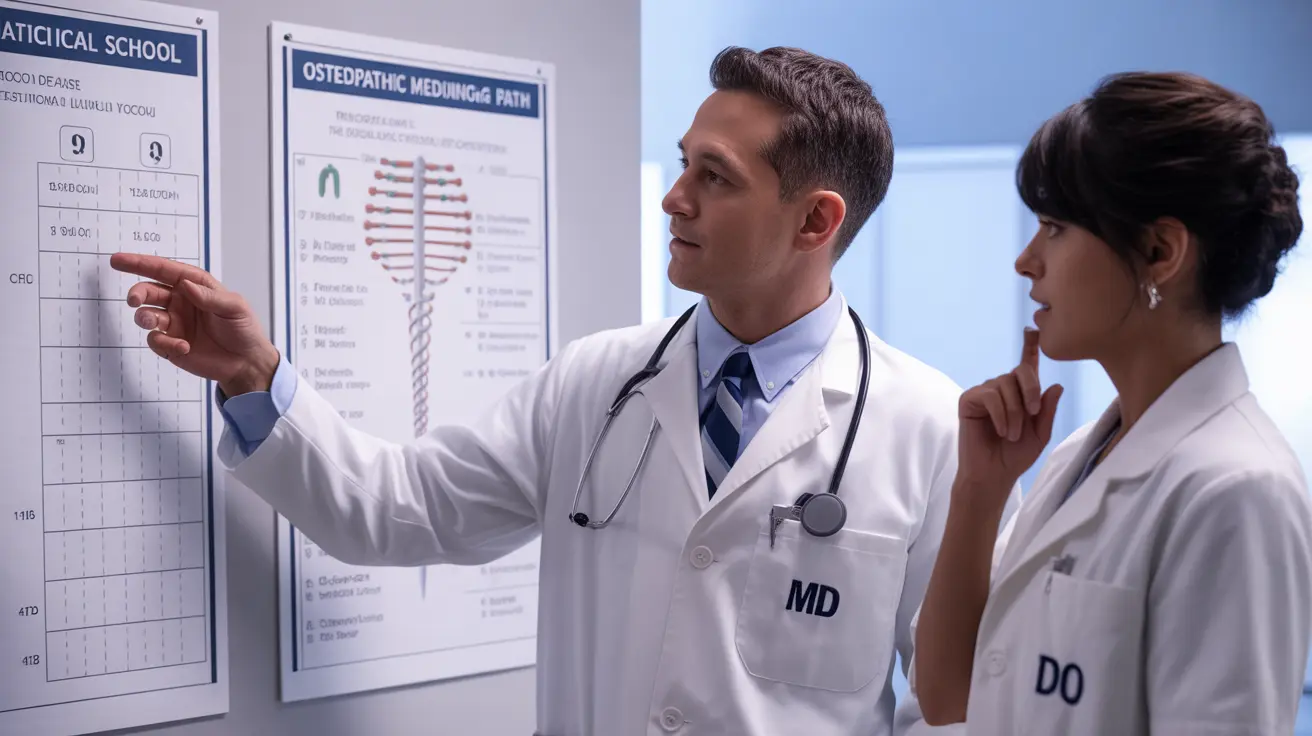When seeking medical care, you may notice that some doctors have "MD" after their name while others have "DO." Both are fully licensed physicians in the United States, but they follow different medical philosophies and training approaches. Understanding these differences can help you make informed decisions about your healthcare provider.
This comprehensive guide explores the distinctions between Medical Doctors (MDs) and Doctors of Osteopathic Medicine (DOs), their training paths, treatment approaches, and how they can serve your healthcare needs.
Educational Background and Training
Both MD and DO programs require four years of medical school followed by residency training. However, their educational approaches differ in several key aspects:
MD Education
Medical Doctors attend allopathic medical schools, which focus on conventional Western medicine. Their training emphasizes:
- Disease diagnosis and treatment
- Evidence-based medical interventions
- Clinical pharmacology
- Surgical techniques
- Laboratory analysis and interpretation
DO Education
Doctors of Osteopathic Medicine receive additional training in:
- Holistic patient care approaches
- Musculoskeletal system understanding
- Osteopathic Manipulative Treatment (OMT)
- Preventive medicine strategies
- Mind-body-spirit connection
Treatment Philosophy and Approach
The fundamental difference between MDs and DOs lies in their philosophical approach to patient care:
MD Treatment Philosophy
MDs typically follow a disease-centered model, focusing on identifying and treating specific conditions using conventional medical interventions, such as medications and surgery.
DO Treatment Philosophy
DOs embrace a whole-person approach, considering how lifestyle, environmental factors, and body systems interact. They often incorporate hands-on manipulative treatment alongside conventional medical practices.
Specialization and Practice Areas
Both MDs and DOs can:
- Practice in any medical specialty
- Perform surgery
- Prescribe medications
- Work in hospitals or private practices
- Serve as primary care physicians or specialists
Understanding Osteopathic Manipulative Treatment (OMT)
OMT is a distinctive aspect of osteopathic medicine that involves using hands-on techniques to:
- Diagnose illness and injury
- Relieve pain and muscle tension
- Support the body's natural healing processes
- Improve overall function and mobility
- Address structural problems affecting health
Frequently Asked Questions
What is the main difference between an MD and a DO doctor?
The main difference lies in their training and philosophy. MDs follow a traditional medical approach focused on treating specific conditions, while DOs receive additional training in holistic care and manual medicine techniques, emphasizing the body's natural ability to heal.
How do MDs and DOs differ in their medical training and treatment approaches?
While both complete similar core medical training, DOs receive extra education in the musculoskeletal system and OMT. Their treatment approach tends to be more holistic, considering the interconnection between body systems and lifestyle factors.
What is osteopathic manipulative treatment (OMT) and how do DOs use it?
OMT is a hands-on technique that DOs use to diagnose, treat, and prevent illness or injury. It involves moving muscles and joints using techniques including stretching, gentle pressure, and resistance to help the body function more efficiently.
Can both MDs and DOs perform surgery and prescribe medications?
Yes, both MDs and DOs are fully licensed physicians who can perform surgery, prescribe medications, and practice in any medical specialty after completing their required training and residency programs.
Should I choose a DO or an MD if I want a holistic and preventive health care approach?
While DOs are traditionally associated with holistic care, both MDs and DOs can provide comprehensive, prevention-focused healthcare. The choice should depend on individual physician qualities, communication style, and approach to patient care rather than the type of degree alone.




